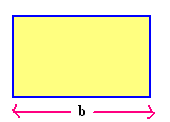Introduction to number of quadrilaterals:
A quadrilateral is a polygon with four sides or edges and four vertices or corners
Quadrilaterals are either simple (not self interesting).simple quadrilaterals are either convex or concave.
Plane is a shape which consist of four sides, and consequently four angles.
Description about Number of Quadrilaterals :
Quadrilaterals are classified into the following types
They are:
Trapezium
Parallelogram
Rhombus
Rectangle
Square
Kite
Number of Quadrilaterals with Example:
Square :
The square is one of the best example for quadrilaterals. It is defined by sides are equal, and its sum of interior angles of all right angles should be (90°). and its opposite sides will be parallel.
we can say square is a specific case of regular polygin, in this case there are 4 number of sides. All the facts and properties described for regular polygons apply to a square.
Rectangle:
The rectangle is somwhat similar to the square, and this is one of the most generally known quadrilaterals. It is defined by having all four interior angles 90° (right angles).
Parallelogram
A quadrilateral has both pairs of opposite sides parallel and equal in length.
Parallelogram is defined by opposite sides are parallel and it should be congruent. It is the the root way of some other quadrilaterals, which are consisting by adding some restrictions of various techniques:
A rectangle is a parallelogram but all the angles fixed at 90°
A rhombus is a parallelogram but with all sides equal in length
A square is a parallelogram but with all sides equal in length and all angles fixed at 90°.
Trapezoid
A quadrilateral should have at least one pair of parallel sides
Rhombus:
In rhombus, the number of sides are four and its all equal.
Rhombus is looking like a special type of parallelogram. Iin a parallelogram, each sets of opposite sides are equal in length. but in rhombus, all four sides are the same length.so the properties are also same.
Rhombus is somewhat light similar ro square but the angles will not be 90o
Kite
A quadrilateral which contains two distinct pairs of equal adjacent sides.
kite is a part of the quadrilateral relations, and while easy to understand visually, is a little tricky to define in precise mathematical terms. It has two pairs of equal sides. Each pair must be adjacent sides (sharing a common vertex) and each pair must be distinct. That is, the pairs cannot have a side in common.
A quadrilateral is a polygon with four sides or edges and four vertices or corners
Quadrilaterals are either simple (not self interesting).simple quadrilaterals are either convex or concave.
Plane is a shape which consist of four sides, and consequently four angles.
Description about Number of Quadrilaterals :
Quadrilaterals are classified into the following types
They are:
Trapezium
Parallelogram
Rhombus
Rectangle
Square
Kite
Number of Quadrilaterals with Example:
Square :
The square is one of the best example for quadrilaterals. It is defined by sides are equal, and its sum of interior angles of all right angles should be (90°). and its opposite sides will be parallel.
we can say square is a specific case of regular polygin, in this case there are 4 number of sides. All the facts and properties described for regular polygons apply to a square.
Rectangle:
The rectangle is somwhat similar to the square, and this is one of the most generally known quadrilaterals. It is defined by having all four interior angles 90° (right angles).
Parallelogram
A quadrilateral has both pairs of opposite sides parallel and equal in length.
Parallelogram is defined by opposite sides are parallel and it should be congruent. It is the the root way of some other quadrilaterals, which are consisting by adding some restrictions of various techniques:
A rectangle is a parallelogram but all the angles fixed at 90°
A rhombus is a parallelogram but with all sides equal in length
A square is a parallelogram but with all sides equal in length and all angles fixed at 90°.
Trapezoid
A quadrilateral should have at least one pair of parallel sides
Rhombus:
In rhombus, the number of sides are four and its all equal.
Rhombus is looking like a special type of parallelogram. Iin a parallelogram, each sets of opposite sides are equal in length. but in rhombus, all four sides are the same length.so the properties are also same.
Rhombus is somewhat light similar ro square but the angles will not be 90o
Kite
A quadrilateral which contains two distinct pairs of equal adjacent sides.
kite is a part of the quadrilateral relations, and while easy to understand visually, is a little tricky to define in precise mathematical terms. It has two pairs of equal sides. Each pair must be adjacent sides (sharing a common vertex) and each pair must be distinct. That is, the pairs cannot have a side in common.




